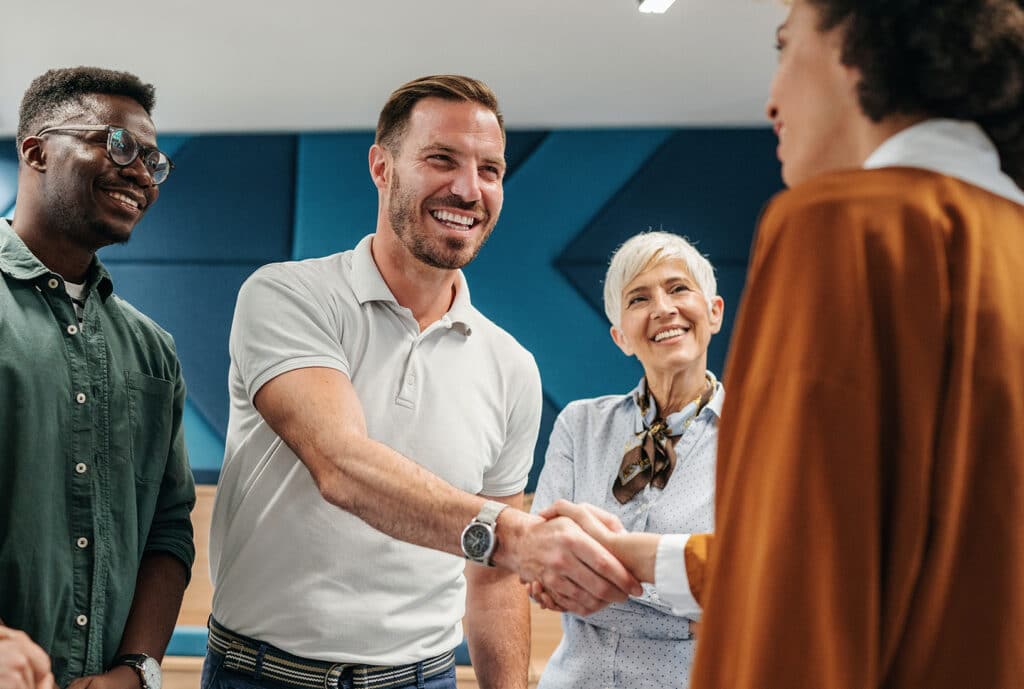Do great brands land great people?
Today’s biggest recruitment challenge is attracting and retaining talent. For Anne Dobey, Digital Transformation Leader at LinkedIn, that challenge can be understood through the arc of post-industrial history.
Dobey was the opening speaker of ‘Great brands land great people – should customer and employee propositions be aligned?’, an event supported by Carter Murray and Frazer Jones.
During and after the industrial revolution, explains Dobey, workers were little more than low-skilled commodities. “The difference between a good and great worker might be someone who puts a widget in a machine in eight seconds rather than nine.” Meanwhile, a handful of people at the top of the organisational pyramid ensured business success.
Since then, the pyramid has become more evenly spread. Heads of business, engineers, project managers and others “can be the difference between the success or failure of a project, a product or, indeed, a business.” They are no longer commodities – they are essential talent.
So, to answer the event’s question, do great brands land great people?

The gap between affinity and desirability
It turns out that it’s a little more complicated than that. According to Dobey’s research there is surprisingly little overlap between the UK’s Top 50 most valuable brands and those organisations, as measured by LinkedIn, where people in the UK would most like to work. Of the top brands only three featured in LinkedIn’s own Top 20 [1].
This suggests that consumer affinity with a brand does not necessarily equate with a desire to work there. What’s required, therefore, is an employer – or talent – brand that sits alongside the corporate and consumer brand and speaks directly to prospective and current employees.
LinkedIn found that organisations possessing a strong employer brand saw an 87% uplift in applications, a three-fold increase in conversion-to-hire rates and a 50% reduction in hiring costs. There were other benefits too: those organisations that combined a strong talent brand with high-quality content marketing increased sales by 35% over a five-year cycle.
So for ‘great brand’ read ‘great employer brand’ – one that is nevertheless aligned to an organisation’s core values. For chair of the event Neil Harrison – Lead Consultant at NH237 Consulting – “the common ground … between marketing and HR” and between company and employer messaging is not necessarily always obvious.
“Just as we communicate with existing customers and new customers in slightly different ways,” says Harrison, “is there common ground in terms of how you communicate with candidates and those already within your organisation?”
“It’s the consistency challenge,” says Paul Davies, Consumer Marketing Director at Microsoft. “It’s finding the relationship between the company brand and the employer brand.
“Our mission is to empower every person and every organisation on the planet to achieve more,” Davies explains. “When you think about translating that into an employer brand, it’s quite a natural fit. It’s about being the one who can empower millions. It’s derivative of the company brand.”
Employee and candidate affinity
Establishing an employer brand is not without its challenges, however. It must speak to multiple audiences and across multiple business units.
For Amy Sawbridge, Brand Director and Head of Employee Experience at Virgin, that means creating a common “red thread” across 60 companies in 30 countries. As she puts it, it must be “flexible enough to allow each of our businesses to interpret it in an effective and meaningful way.”
When it’s put to her that her organisation has successfully created a “certain Virgin-ness” across all its disparate companies, Sawbridge says: “We have a bit of an allergic reaction to over-formalising anything so we prefer to create frameworks to provide guidance rather than a set of prescribed mandates.”
It’s important to allow employee and candidate affinity to go beyond the product, argues Derren Young, VP Human Resources at EA. While many of EA’s 350 million gamers are likely to be attracted to a job in the industry, the pull might come from a specific game. “If you love [the football simulation] FIFA then you probably want to work on FIFA” – or the reputation and culture of a specific studio, acquired as part of the company’s expansion. “You’ve got to allow those two things to exist.”

Engaging candidates from other sectors
Chair Neil Harrison, identifies a common challenge for established brands, what he calls sector blindness. “Sometimes organisations are so well known for one thing,” he says, “it’s not clear that it needs a whole bunch of financial services or procurement people.”
Young recognised the predicament. “I’m not saying everyone at EA is a massive gamer but there is some connection between product and the people. So you naturally target people who have some affinity with the business. Reaching out beyond that can be more difficult.”
Davies says Microsoft faces a similar issue:
“We are a big established business, but new joiners are often surprised by just how entrepreneurial the company feels, diversity in all its forms is highly critical for us, and so we have a significant number of initiatives to attract a very diverse group of employees. This includes DigiGirlz, a global programme to excite high school girls about what a future career in technology is like”.
A successful employer brand must align with its customer proposition, agrees EA’s Derren Young. “We can only be authentic in what we say if it mirrors what the players are experiencing. The whole organisation has to live and breathe the experience.” EA uses the word ‘play’ to describe the crossover between the consumer experience and the employee experience. That works most of the time, says Young, but can occasionally feel at odds when, for example, a studio is up against a major deadline.
Does authenticity mean an employer brand can’t be aspirational too?
Davies doesn’t think the two are mutually exclusive. “They can go hand in hand,” he says, especially in the technology industry where everything is, by default, forward-looking. “We have a phrase we use: ‘Come as you are. Do what you like’,” says Davies. “It’s about allowing employees to operate in a way that works for them. It means, among other things, flexible working patterns. It’s all about the outcome rather than the nine to five.”
Getting the c-suite involved
How aware is the c-suite of attempts to establish an employer brand? “Our founder [Richard Branson] fundamentally believes you put your people first,” notes Virgin’s Amy Sawbridge. “I’m not pushing on an open door. It’s wide open already – I don’t even have to touch it.
“Any chief executive who’s not been paying attention to this is a fool. Look at what happened to Sports Direct and United Airlines. If all else fails, point to the risk [of not developing an employer brand].”
On c-suite engagement, Paul Davies says Microsoft spends a lot of time training senior executives on tools they need to use to become advocates and brand ambassadors themselves. These ‘social media 101’ sessions match older executives with twenty-somethings who have “grown up with social media and know how to use it intuitively.”
For LinkedIn’s Anne Dobey, ignoring the importance of the employer brand is like hiding your most impressive car at the back of the showroom. “To quote Edgar Watson Howe,” she says, “‘Doing business without advertising is like winking at a girl in the dark. You know what you are doing but nobody else does.’”
If you have any questions about this article and if you need support hiring or finding the right role for you, contact our Carter Murray team.
[1] https://www.linkedin.com/pulse/linkedin-top-companies-2017-where-uk-wants-work-now-isabelle-roughol